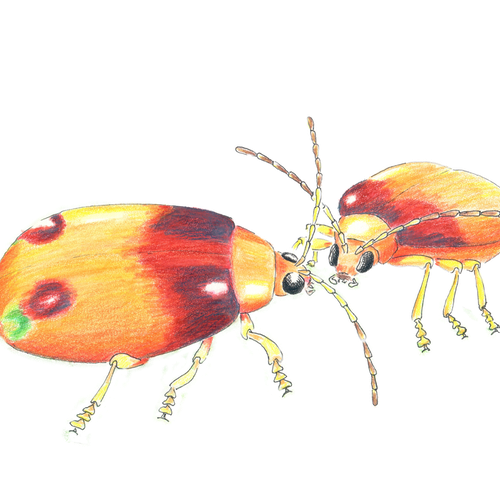By ION STAUNTON*
AS a grower, I reckon you have good reason to be happy if your olive grove is way out of town.
I see olive trees used as features or ornamental foliage in towns around restaurants; some homeowners like them as they are hardy, have a grey-green foliage, a variation on other foliage colours.
By this time of the year many have yellowed leaves among the grey-green – an olive lace bug (OLB) symptom.
OLB are reluctant flyers. Adults can, and do, fly, but most prefer to walk to newer leaves. Flying from town to your grove is highly unlikely.
It is a native bug originally found on the mock olive (notelaea longifolia), named that way by long-departed botanists because it was of similar appearance to the proper olive we brought out from Europe (olea europaea).
The bugs didn’t care ... in fact they were so glad that happened because olive groves far outnumber the occasional mock olive tree.
An OLB invasion of your grove can be by flight, assisted by a gentle breeze; they won’t take to the air if it is windy.
If you don’t have an OLB problem, keep checking the edges of your grove.
Usually an attack begins on the perimeter trees and if your trees are old enough to have intermingling branches, the adults and older nymphs can transfer without realising they’ve moved onto another tree.
That’s a good reason to prune and avoid this migration.
Yellow leaves are the giveaway. And yes, yellowed leaves are also indicative of lack of nutrients or water.
Each female lays about 100 eggs in her lifetime of a few months; adults can overwinter. Eggs are inserted into the undersides of leaves close to the centre vein and, if deposited in late autumn, these eggs can survive winter.
Eggs hatching in spring may take a few weeks to become adults, but in summer they can get through the five nymphal stages in 12 to 14 days.
The hatching nymph will usually only move a few steps (millimetres) before burying its beak into the leaf tissue to suck sap.
By the time they’ve gone through the second moult, that leaf is getting overpopulated so they move to another leaf – probably a newer, undamaged leaf – to continue feeding.
The older nymphs may change leaves at each subsequent moult.
When they become adults, they develop a whole new outlook on life. Sex can do that.
The female will prefer unpopulated leaves to insert her eggs so it all starts over again (four to seven generations a year). And it all happens on the underside of the leaves. The upper surface can show stipples/discoloration which eventually becomes yellow.
Trees that have been overpopulated with OLB can miss setting fruit for one to two seasons, or die. But if you are smart enough to be reading North West Farmer you’ll be smart enough not to ignore the early symptoms and it will never get to that.
HOW TO CONTROL
BECAUSE of the short life cycle and the number of generations per year, you need to get your timing right in your “break the life cycle” attempt.
Here goes (if you choose to use PyBo which has only a 1-day withholding period):
You must target the undersurface of the leaves. Boom spraying doesn’t cut it; you need some swirling droplets.
You can test how good you and your application equipment combine by doing a simple test; apply it to a couple of trees (with bugs) at the end of a row. Apply from both sides of these trees, then stop and check for survivors.
Any insect hit with a droplet will be dead or twitching within a minute or two. If there are unaffected pests, the droplets didn’t reach them. So, adjust the pressure, the nozzles or the angle and do another couple of trees at the end of another row.
As the main pest of olives is the OLB and as they are always under the leaves, you need to choose application equipment that delivers for you.
If you apply last thing in the day or early evening, the natural pyrethrum will not be degraded by UV light and be effective all night and almost until morning tea time the next day.
However, as the bugs don’t move out from under the leaf they are unlikely to walk on the upper, treated surface. Other pests, yes, OLB no – they stay put.
NOW FOR SOME SIMPLE MATHS.
Let’s say you apply on the evening of the 1st of the month and kill the nymphs and adults, meaning the only OLB life is an egg which is inside the plant tissue or under a resin coating.
If the first eggs hatch on the 2nd and emerge as tiny nymphs, you have until about the 15th, two weeks after the first spray before these nymphs get through their five stages and become adults ready to mate and begin laying more eggs.
Maybe a better way to assess the timing of the next application is begin checking for adults on say 14th; there will be nymphs but you’ll be looking for adults with wings.
In cooler climates the 12 to 14 days of moulting can be a week or so longer before winged ones appear.
As mentioned earlier, OLB adults would much rather walk than fly so it is unusual to find adults on your trees unless they were “born and raised” there.
You have day or two to organise your next application because the adults need a day or two to mature, mate and begin laying eggs. If you kill them first, they can’t. You have broken the life cycle!
*Ian Staunton is the entomologist at Pestech Australia, manufacturer of Py-Bo Natural Pyrethrum Insecticidal Concentrate. Contact: ion@pestech.com.au




